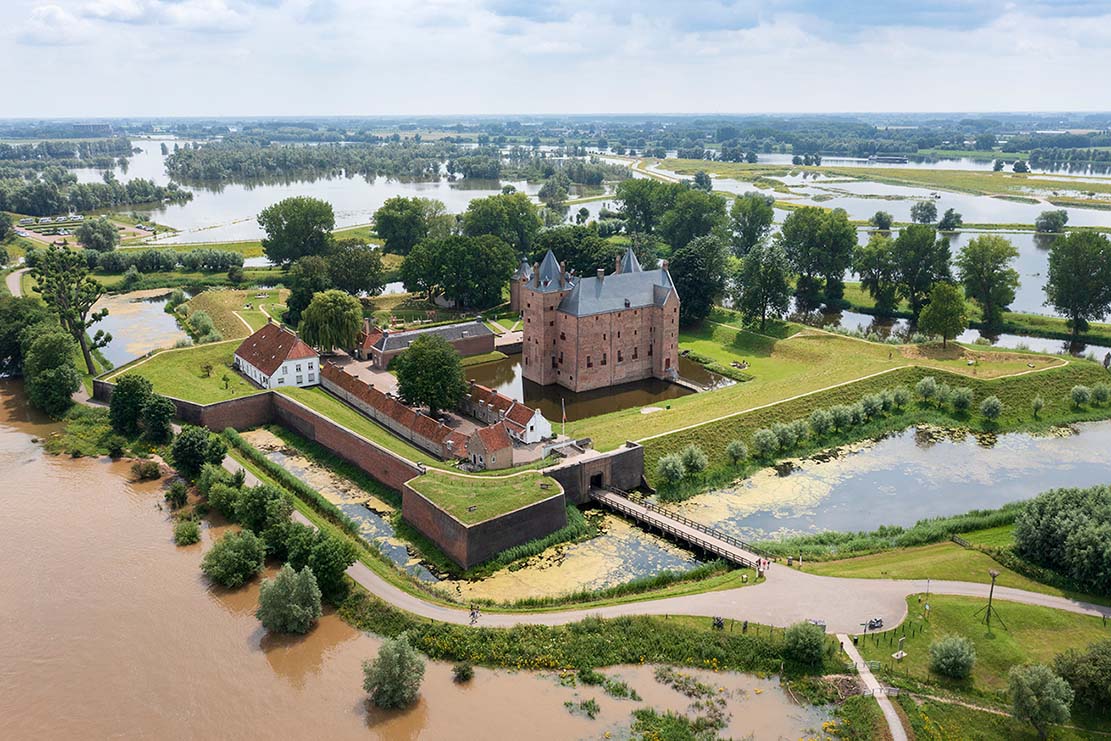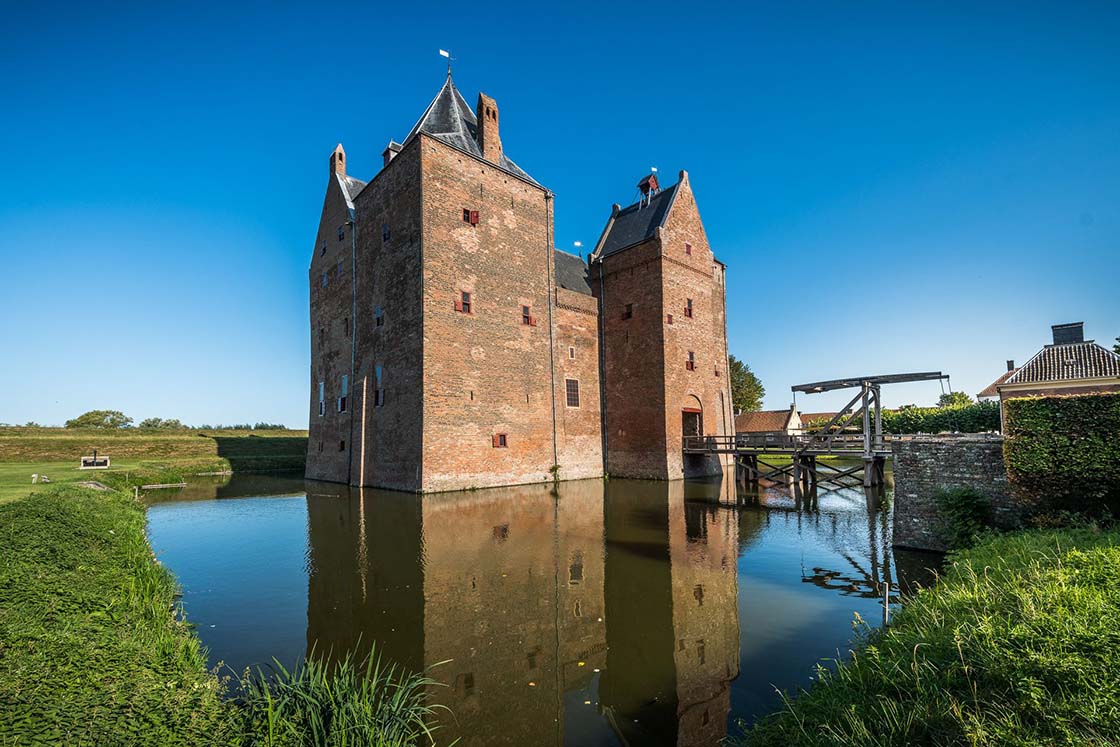Loevestein Castle
Loevestein Castle is one of the most iconic medieval castles in the Netherlands. It is renowned for its rich history, unique architecture, and strategic location. Constructed in the 14th century, the castle has witnessed significant historical events. This includes its use as a fortress, state prison, and later as a museum. With its well-preserved structure and picturesque setting along the rivers, Loevestein Castle continues to draw the attention of history enthusiasts and tourists alike.
Can’t wait to visit the castle? Book your Loevenstein Castle tour online.
Location of Loevestein Castle
Loevestein Castle is situated in the town of Poederoijen. It is located in the province of Gelderland in the Netherlands. Its strategic position at the confluence of the Waal and Maas rivers allowed the castle to control important water routes in the Middle Ages. The castle’s remote setting, surrounded by rivers and wetlands, made it difficult for attackers to approach. This enhanced its defensive capabilities. You can access the site by land, but a more picturesque route involves taking a ferry that transports visitors across the scenic waters.
In its early days, they specifically chose the location for its military and economic importance. The control over the rivers enabled the castle’s occupants to collect tolls from passing ships. This made it a valuable asset in the region. Today, the tranquil surroundings provide a striking contrast to its once fortified purpose. Nature now plays an essential role in the castle’s picturesque landscape.

History of Loevestein Castle
The history of Loevestein Castle dates back to 1357. It was constructed by knight Dirc Loef van Horne. As a nobleman seeking to expand his influence, he selected the site for its strategic significance. The castle was initially built as a defensive structure. The name Loevestein, meaning “Loef’s stone,” originates from the knight’s own name. The strong stone construction of the castle is reflected in this name.
In the centuries that followed, numerous historical conflicts embroiled Loevestein Castle. During the Eighty Years’ War between the Dutch and the Spanish (1568-1648), they transformed the castle into a state fortress. Its strong walls and isolated location made it a prime location for detaining political prisoners. The most famous of these prisoners was the Dutch jurist and philosopher Hugo Grotius. In 1619, Grotius was imprisoned at Loevestein for his controversial political and religious views. In a daring escape in 1621, he smuggled himself out of the castle in a book chest. This story has since become legendary in Dutch history.
Throughout the 18th and 19th centuries, Loevestein remained a vital part of the Dutch defense system. Specifically, it became part of the Dutch Water Line, a series of defensive works that used water as a means of protecting the country from invasion. By flooding certain areas, the Dutch could prevent enemy forces from advancing. Loevestein Castle played a critical role in this defense strategy.

Current status
Today, Loevestein Castle stands as a well-preserved historic site. It now serves as a museum dedicated to its remarkable past. The castle and its surrounding grounds are open to the public. Visitors have the chance to explore both its architectural features and the stories that have shaped its history. A visit to Loevestein Castle includes access to the main castle building. The medieval-style courtyard and various exhibitions delve into the castle’s role in Dutch history.
They have carefully preserved much of the castle’s medieval architecture. The thick stone walls, towers, and moat remain intact. They restored the interior of the castle to reflect different periods of its long history. This allows visitors to experience the atmosphere of both a medieval fortress and a state prison. Interactive exhibits and historical reenactments provide insight into the lives of former inhabitants and prisoners. These activities add depth to the castle’s narrative.
Loevestein Castle is also part of the UNESCO-listed Nieuwe Hollandse Waterlinie (New Dutch Waterline). This is a recognition of its historical importance as a military defense site. This designation ensures the protection of the castle and its surrounding landscapes, preserving them for future generations. In addition to its historical significance, Loevestein Castle plays a role in modern cultural life. The site regularly hosts various events, such as medieval festivals, educational programs, and guided tours. These activities allow visitors to engage with Dutch history in an interactive and engaging manner.
For those seeking a more immersive experience, you can stay overnight in the castle’s former soldiers’ quarters, which they have transformed into guest accommodations. This unique opportunity allows guests to truly connect with the castle’s rich heritage. They are able to enjoy the serenity of its rural surroundings.
Admission
Community features
Castle features
Video
Location
Official website
Featured listings














